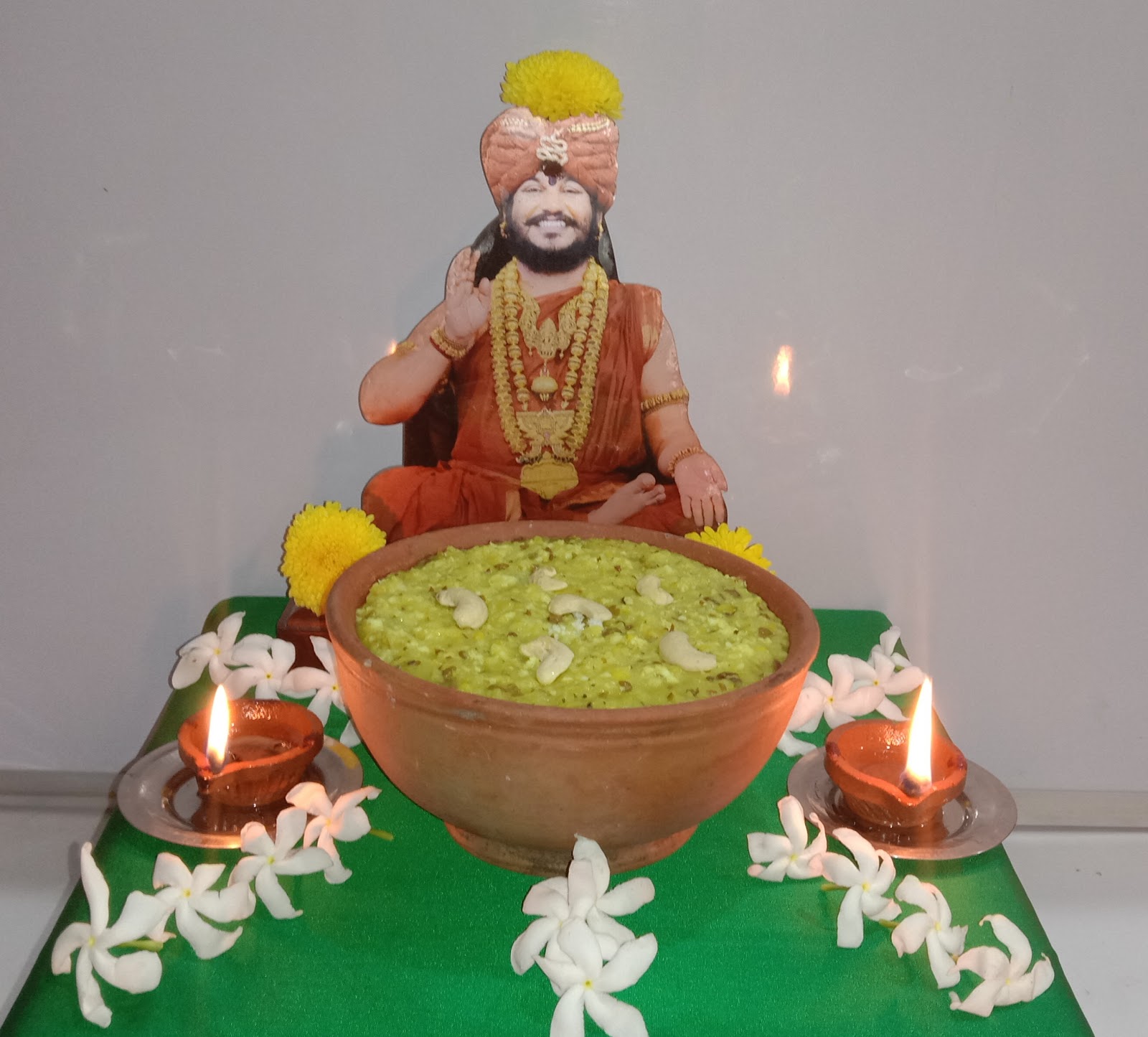Moong Dal Pongal
Mung bean and rice savory porridge
Moong dal is one of the most nutrient dense lentils and is packed with minerals like potassium, magnesium, iron, and copper.
Introduction
About this Recipe
Pongal, or Kichdi (Kedgeree in the English dictionary), is generally made with rice and yellow moong dal (dehusked mung beans). A variety of millets can also be used for making pongal instead of rice. Likewise, instead of yellow moong dal, whole green moong dal or split green moong dal (split but not husked/skinned mung beans) can also be used. The difference will be the cooking time – the yellow moong dal cooks faster than the split moong and the whole moong dal ones. However, the skin of the moong dal is very nutritious and also adds to the fibre content of the dish. Hence the whole green moong dal version is preferred.
Depending on the preparation, pongal helps to balance all the three doshas described in Ayurveda viz vata, pitta and kapha. Moong dal is one of the most nutrient dense lentils and is packed with minerals like potassium, magnesium, iron, and copper. In addition to this, it also contains folate, fiber and vitamin B6, apart from loads of high-quality protein. Hence pongal can be a dosha balancing, high protein and nutrient dense dish. Often eaten for breakfast, this dish can just as well become a lunch or dinner dish.
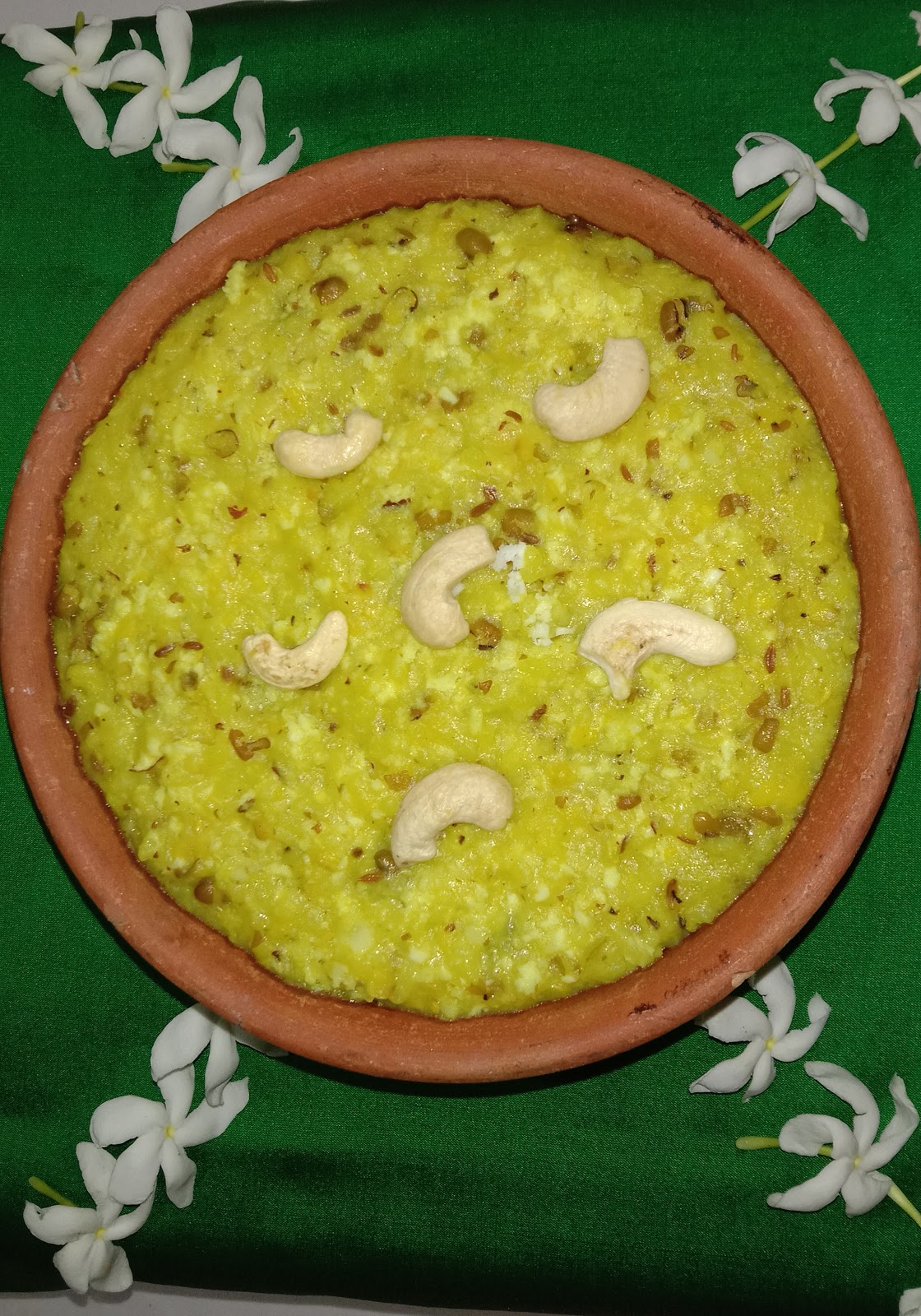
Preparation time: 20 mins
Cooking time: 25 mins
Total time: 45 mins
Servings : 3-4 persons
Course: Main course
Cuisine: Tamil Nadu cuisine
Ingredients
-
Broken Rice (Small Rice) ½ padi 750 gms
-
Fried Moong Dal/Green Gram ¼ padi 375 gms
-
Turmeric Powder 1/16 palam 2.18 gms
-
Butter 1½ palam 52.5 gms
-
Pure Water 1½ padi 2.4 ltr
-
Pepper ¼ palam 8.75 gms
-
Cumin Seeds ¼ palam 8.75 gms
-
Grated Ginger 1 r.e 4.2 gms
-
Powdered Salt ½ palam 17.5gm
-
Ghee – 6 palam 210 gm
-
Asafoetida veesam 1/16 r.e 2gms
-
Grated Coconut 4 palam 140 gm
-
Cashew Nuts 5 palam 175 gm(optional)
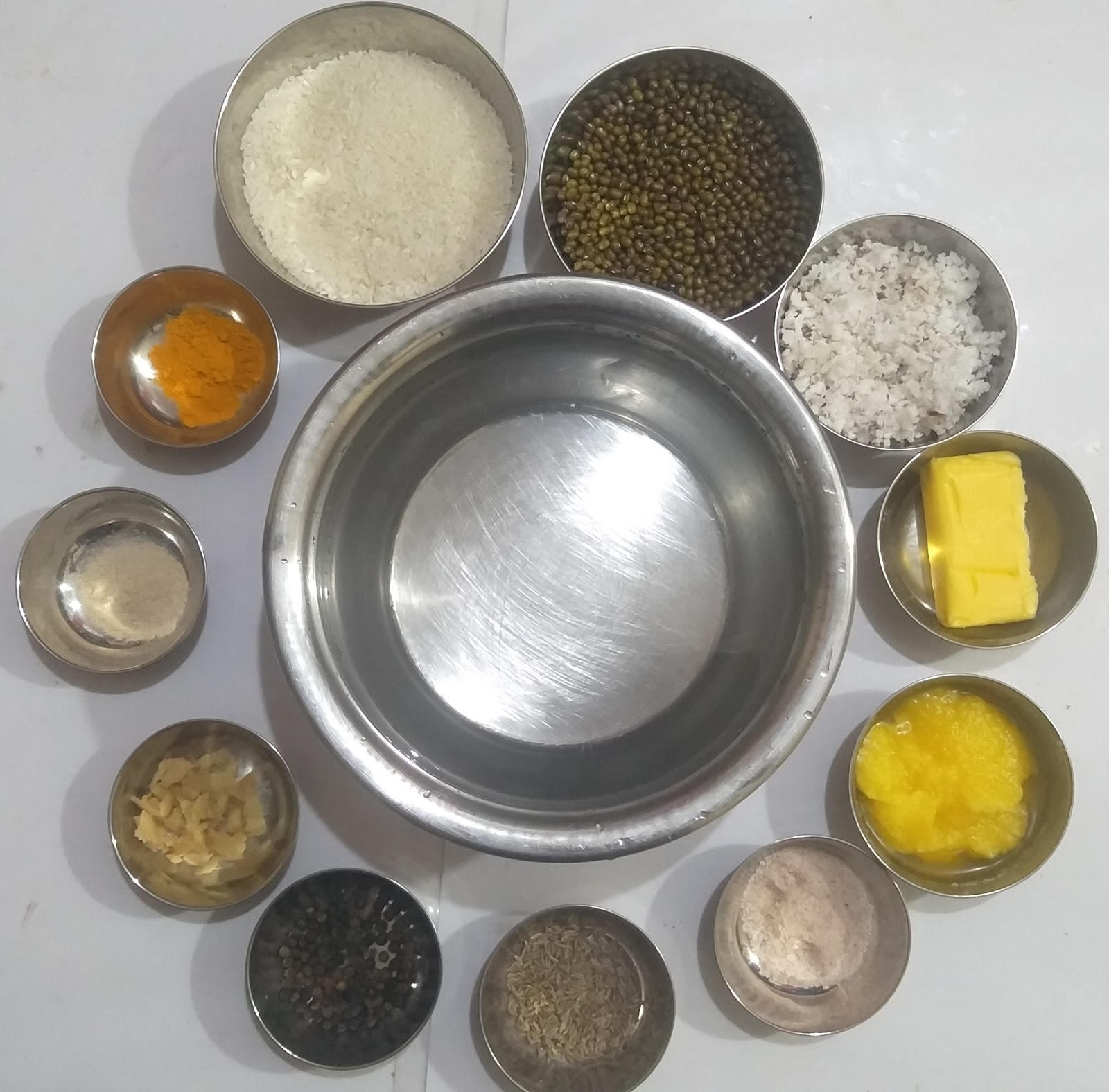
Bhaga Shastra gives ingredient measurements in measurement systems used in the olden days. Hence please use the conversion guidelines below to convert it into modern measurement systems. When giving this recipe, we are not rounding any measurements in the modern units, so as to avoid any deviations from the Bhaga shastra.
Bhaga Shastra Units Conversion
1 Padi – 1500 gms or 1.5 kgs approx.
1 Palam – 35 gms approx.
1 R.e (Rupee Equivalent) – 4.8 gms approx.
Cooking Method
- Take a pan and fry whole moong dal until the aroma arises.
- Then split this roasted dal with a few seconds blitz in a mixer grinder.
- Mix this roasted split moong dal with the rice.
- Wash them all well and drain the water.
- Next, add turmeric powder and butter to the rice & dal mixture.
- Take water in a 6l water holding capacity pot and allow it to boil. Once the water has boiled, add the above mixture to it. Mix well and Close the lid.
- When the rice is almost cooked, add pepper, cumin seeds, ginger and salt. Mix the dish well.
- Then, add ghee and stir the pongal well. Keep it on slow flame.
- Dissolve asafoetida in water and pour it into the pongal.
- Add grated coconut and keep the pongal on slow flame for 5 minutes.
- Stir well and serve it in a bowl.
Note: Instead of coconut, cashew nuts can also be added.
Step by step instructions
1
Take a pan and fry whole moong dal until the aroma arises.
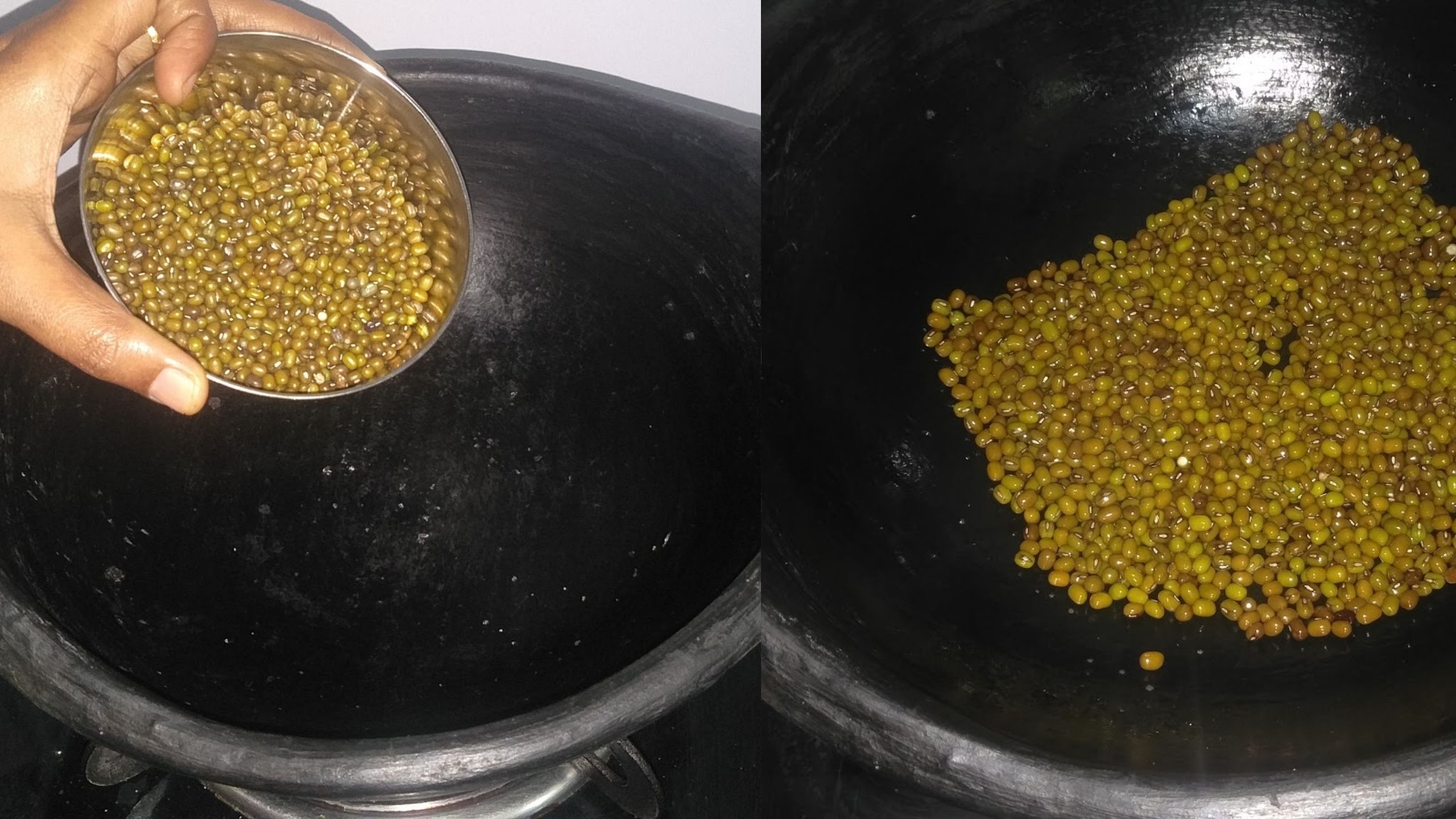
2
Split the dal in a mixer grinder, with a few seconds blitz. Mix the split moong with the rice.
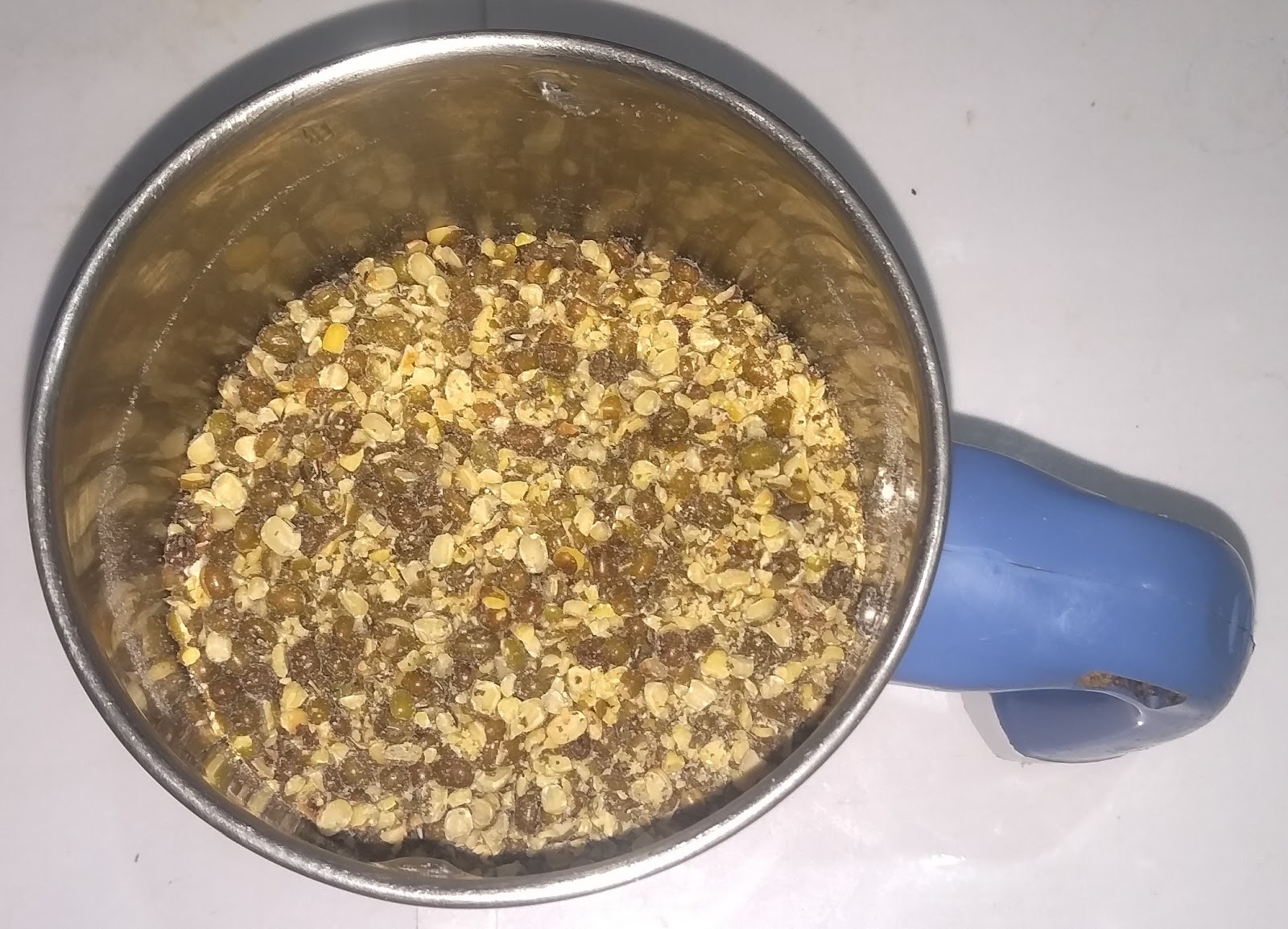
3
Wash the mixed rice and roasted split moong dal well and drain the water.
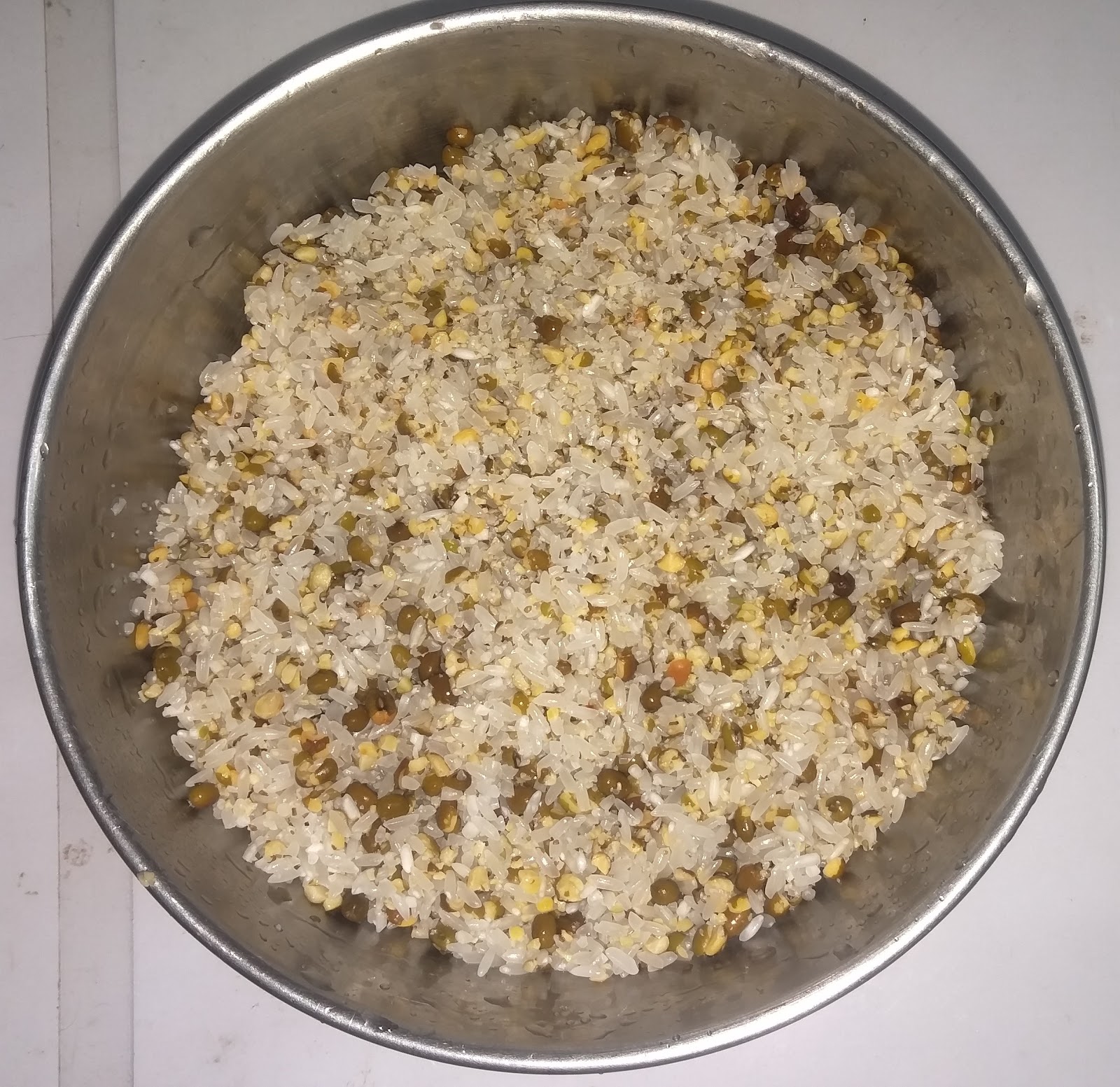
4
Next, add turmeric powder,

5
And butter to the rice & dal mixture.
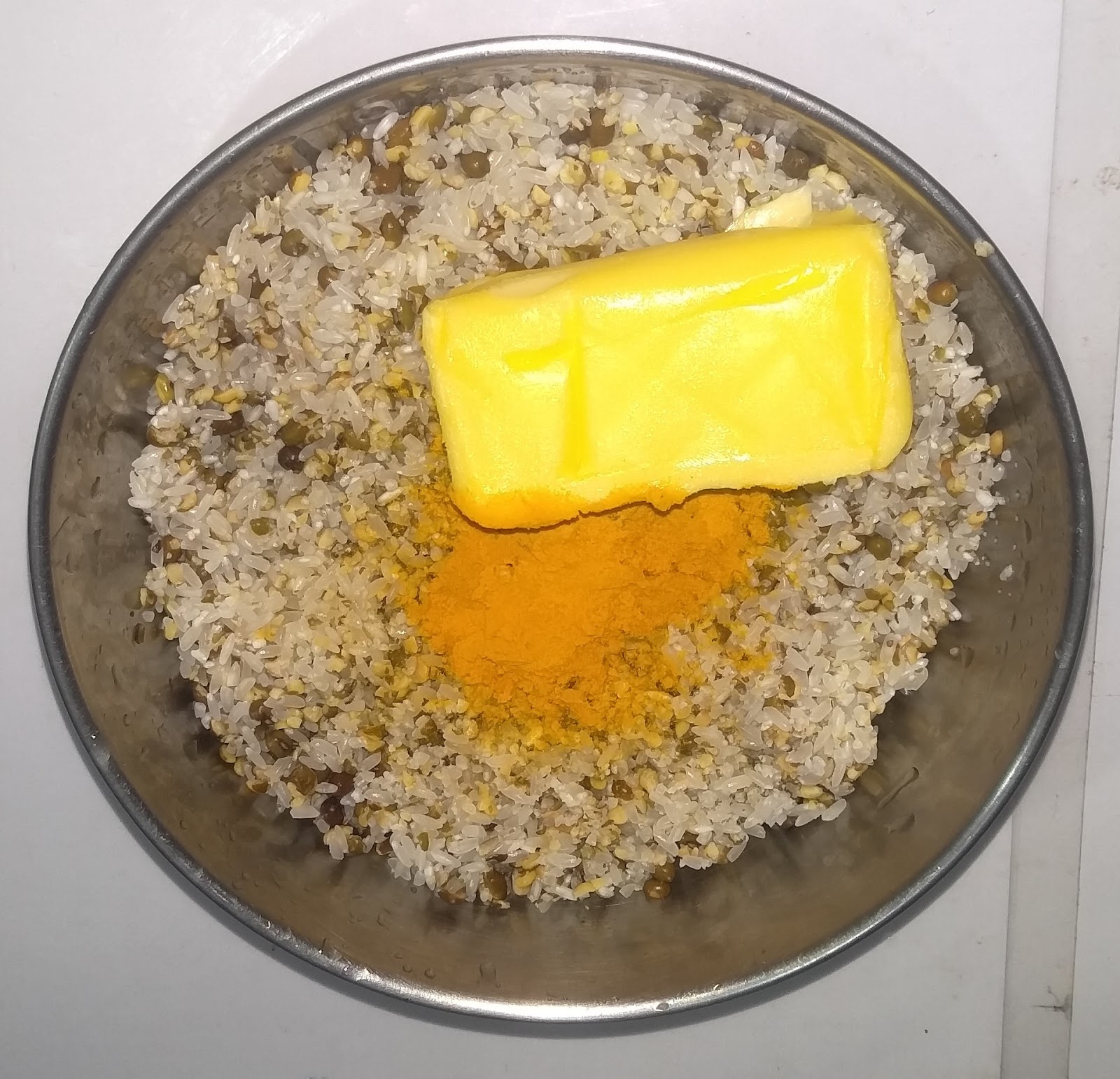
6
Take water in a 6 ltr water holding capacity pot and allow it to boil.
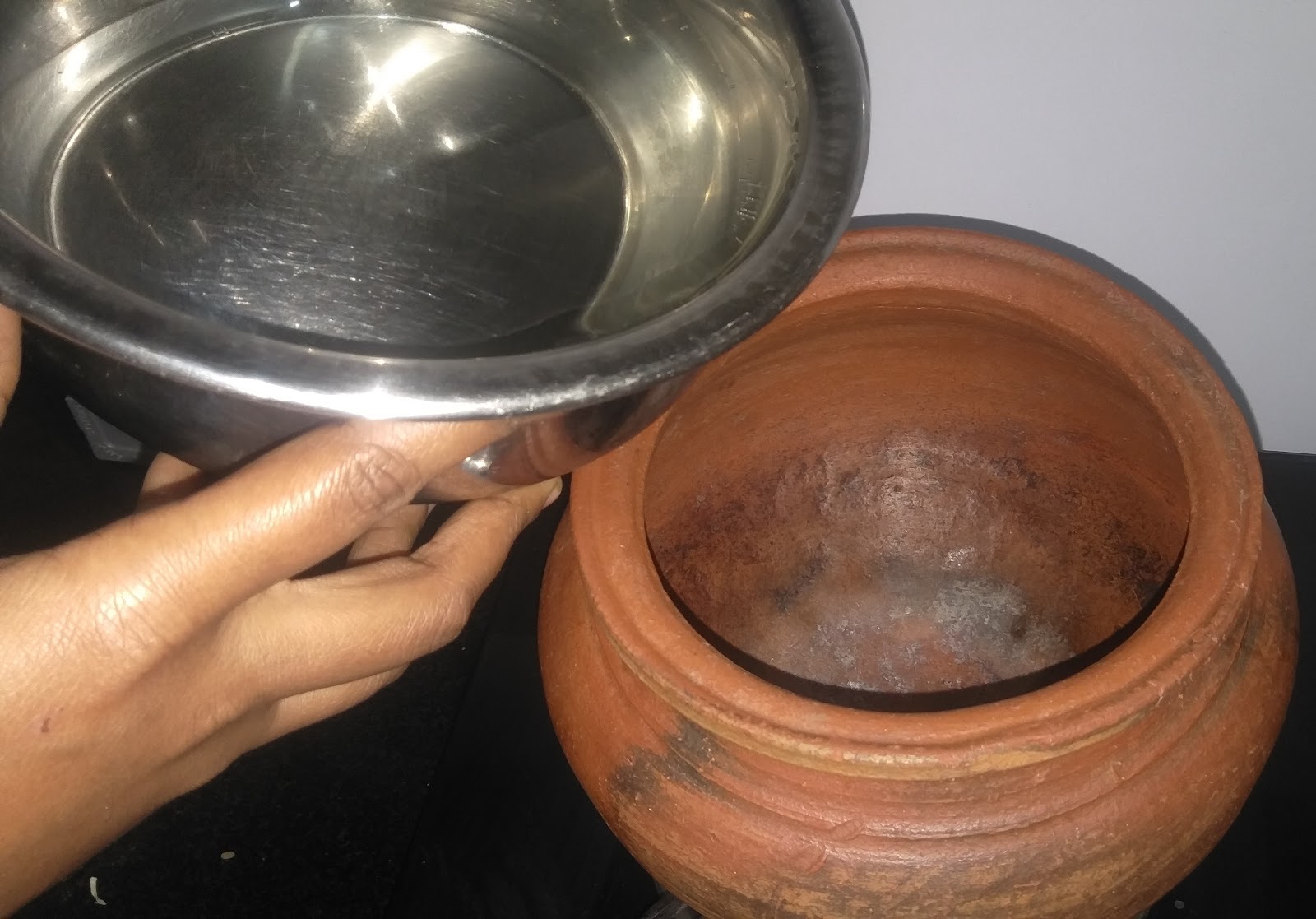
7
Once the water has boiled, add the above mixture to it. Mix well and close the lid.
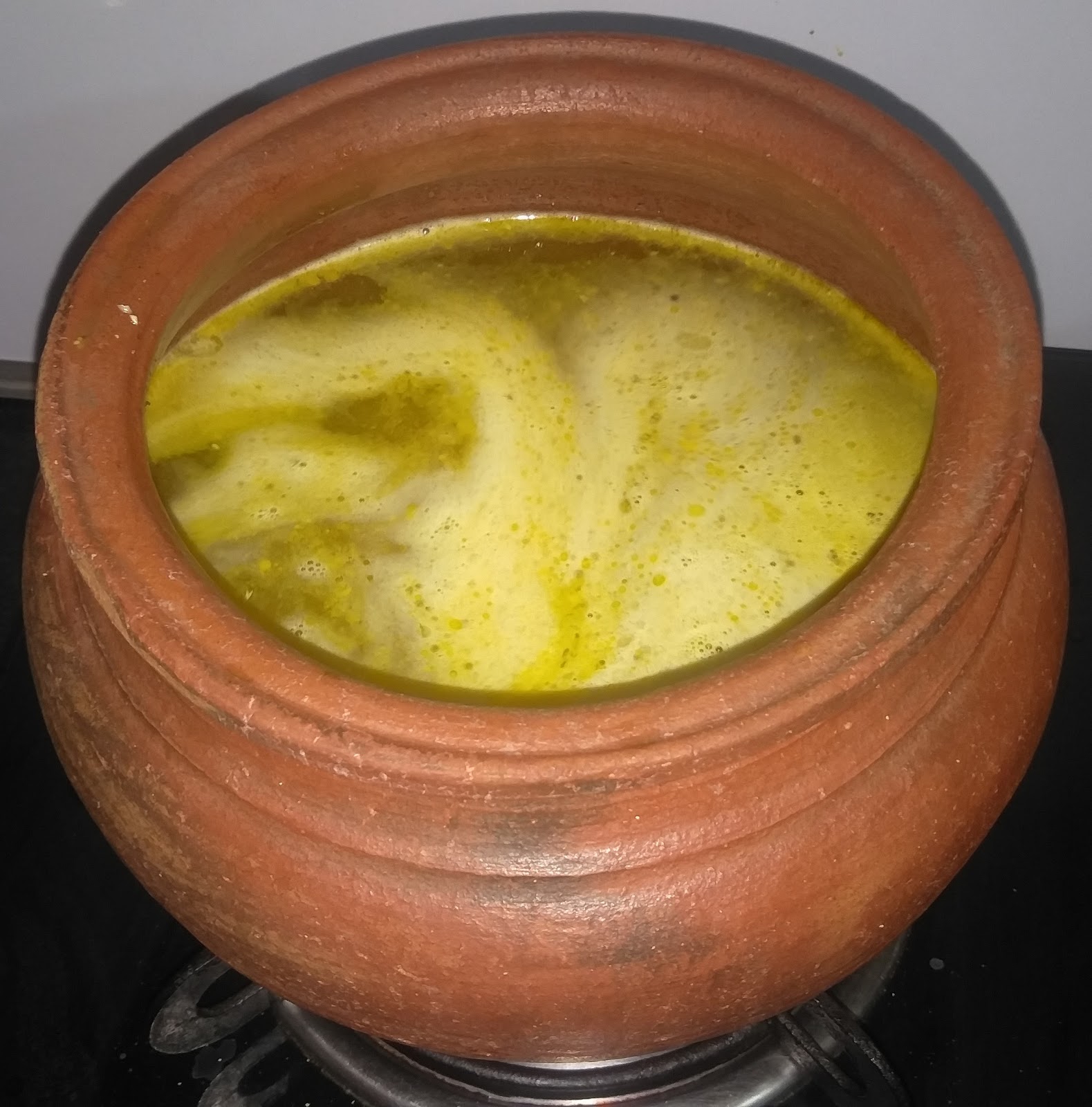
8
When the rice is almost cooked, add pepper,

9
Add Cumin seeds and Ginger.
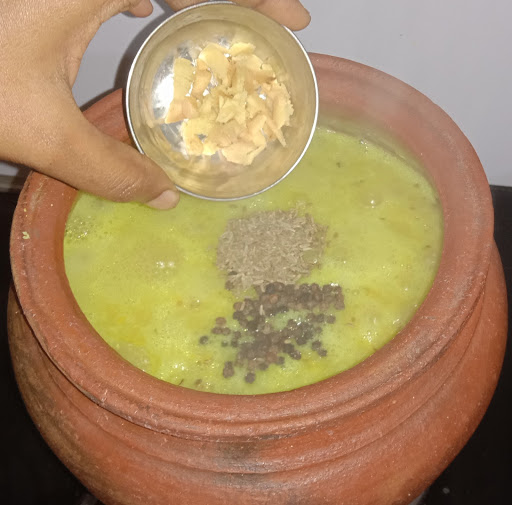
10
and salt. Mix all this added ingredients well.
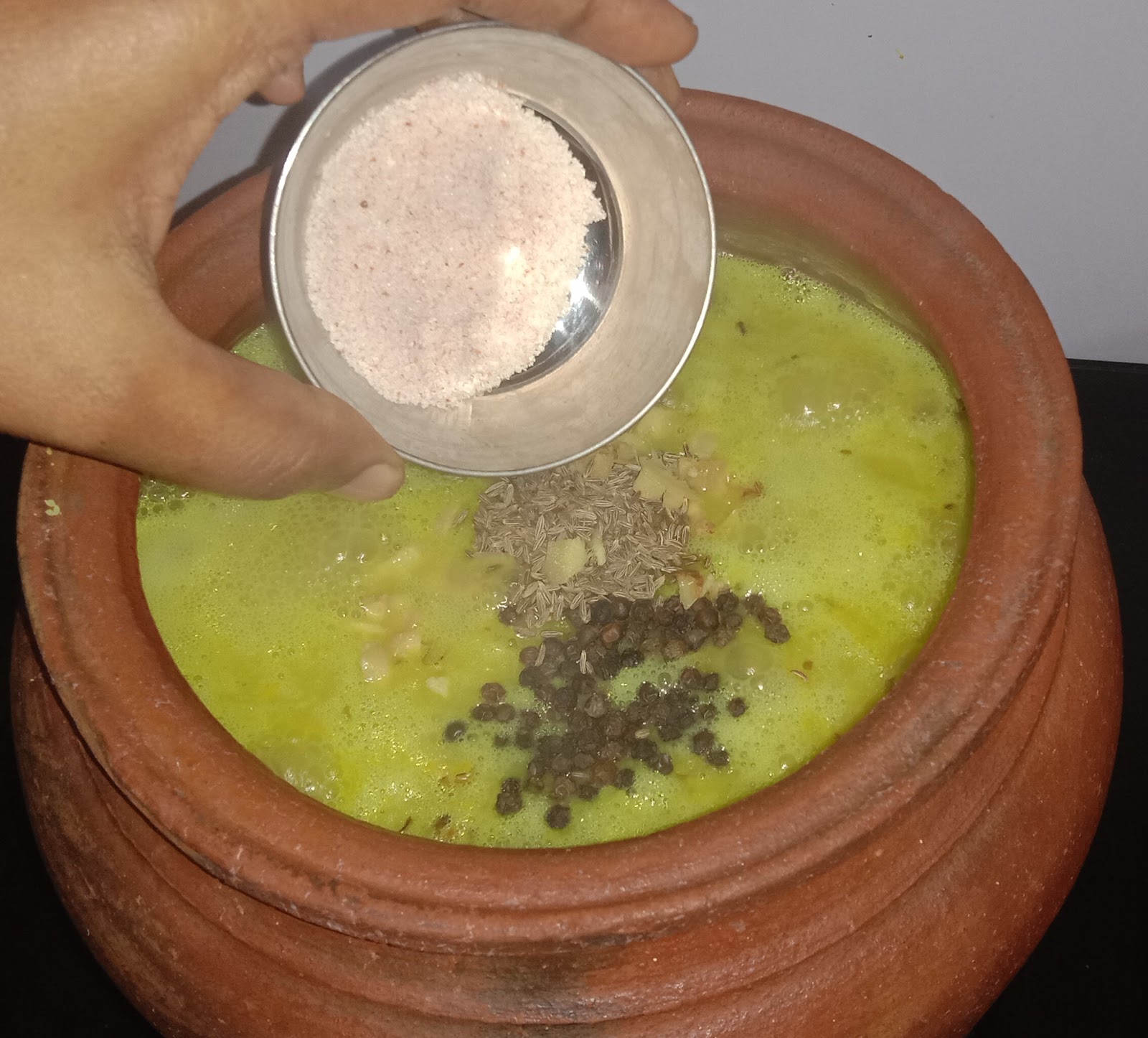
11
Add ghee and stir the pongal well. Allow it to cook on a low flame.
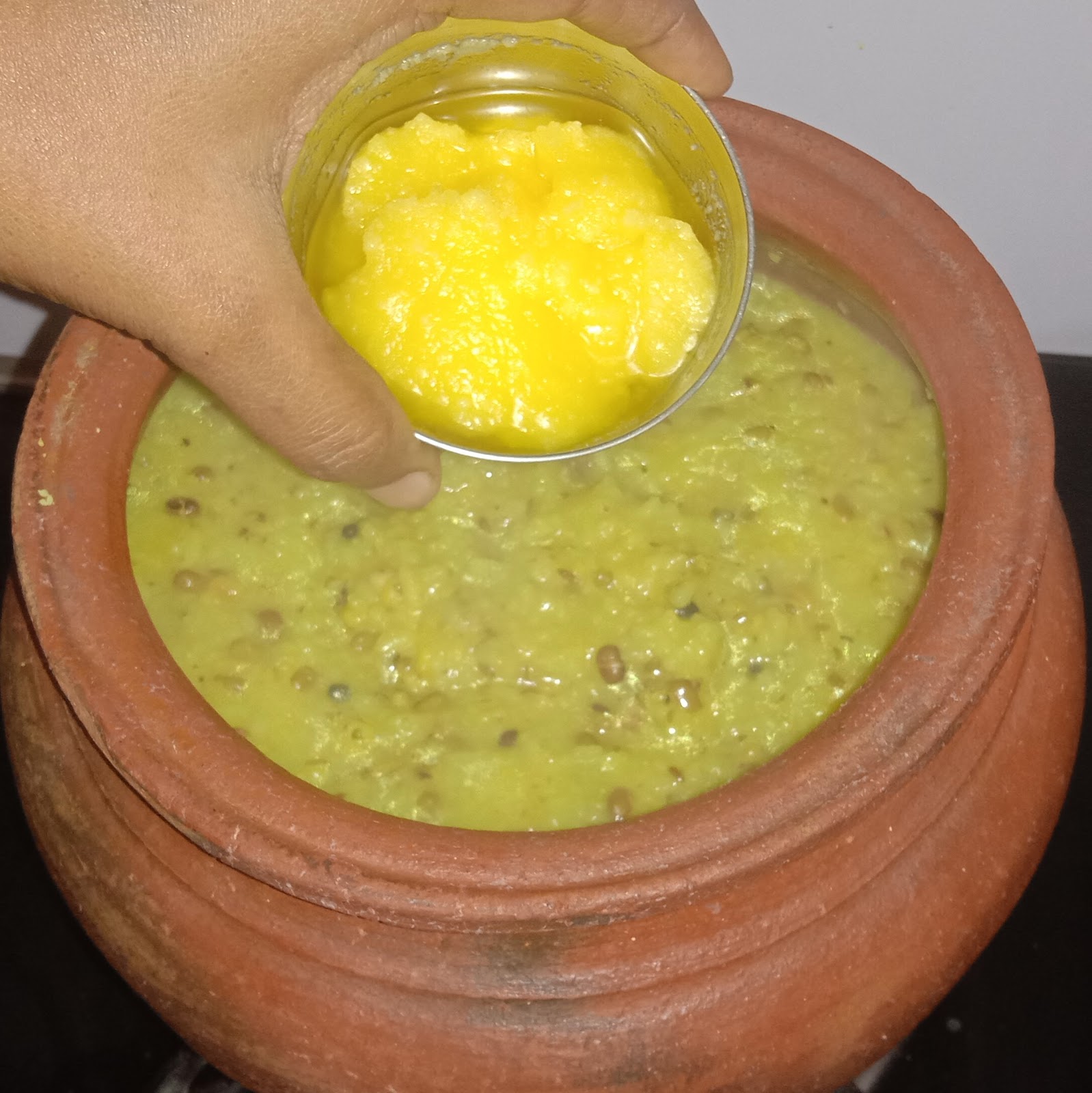
12
Dissolve asafoetida (hing) in water and pour it into the pongal.
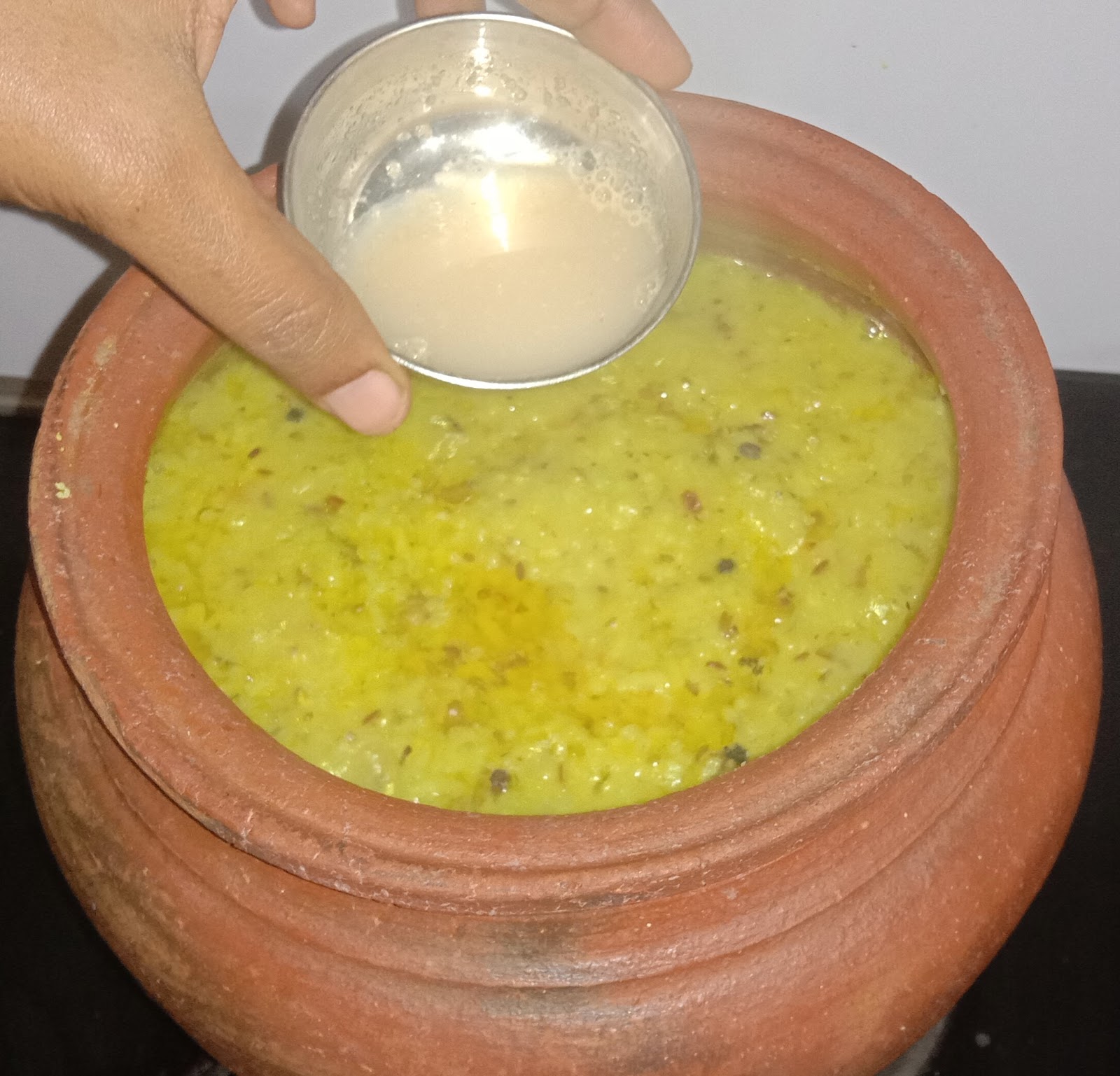
13
Add grated coconut – continue to cook the pongal on low flame for 5 more minutes.
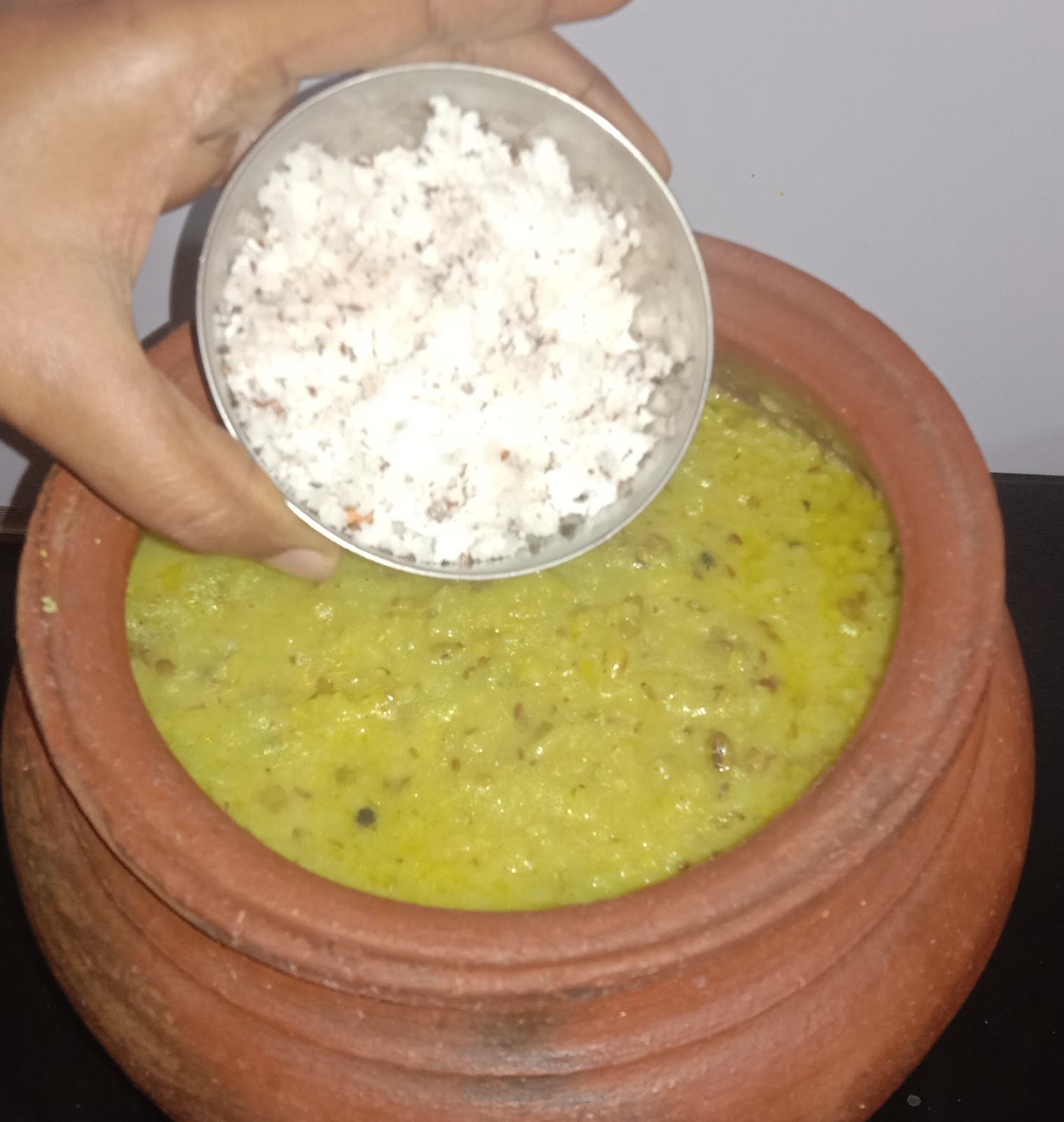
14
Stir well and serve it in the bowl, and offer naivedyam to Swamiji.
